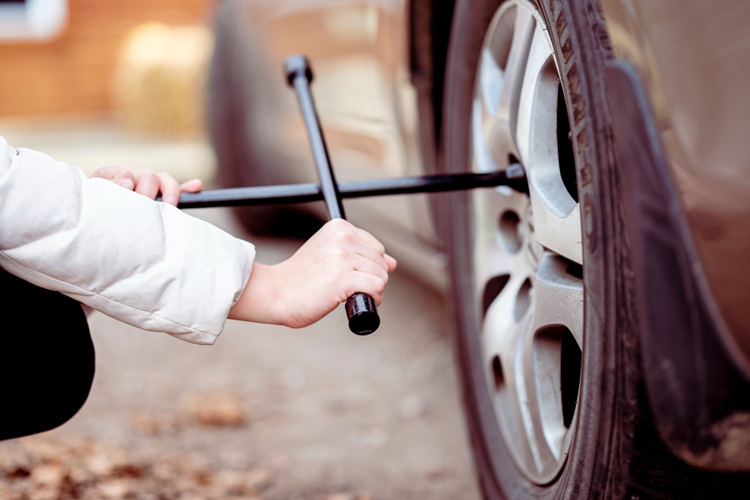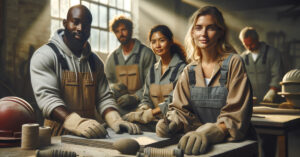Ever parked a massive truck on a sloped yard and wondered, “What’s really keeping this beast from rolling away?” The unsung heroes here are wheel chocks. For fleets, logistics companies, and industrial sites in the Kingdom, rubber wheel chocks in Saudi Arabia are becoming indispensable safety tools that prevent accidents and protect lives.
What Are Rubber Wheel Chocks?
Simply put, wheel chocks are wedge-shaped blocks designed to fit snugly against a tire. They use friction, weight, and design to keep heavy-duty vehicles from moving when parked or during loading and unloading. Rubber chocks, in particular, are popular due to their durability, resistance to wear, and affordability compared to steel or aluminum alternatives.
Why Do Heavy-Duty Vehicles Need Them?
In Saudi Arabia’s busy industrial zones—ports, oil fields, construction sites—vehicles are often parked on uneven or unstable ground. A simple handbrake isn’t always enough to hold tens of tons of weight. According to the U.S. Occupational Safety and Health Administration (OSHA), vehicle roll-aways are a common cause of workplace injuries. Rubber chocks act as an extra line of defense, especially where safety is non-negotiable.
Key Features of Quality Wheel Chocks
- High-traction surface: Grooved patterns or textured rubber ensure strong grip against tires.
- Weather resistance: Saudi summers are harsh; good chocks withstand UV, sand, and heat without cracking.
- Portability: Handles or ropes make moving and positioning easier for workers.
- Load rating: Always check whether the chock is rated for light trucks, trailers, or massive earthmovers.
Choosing the Right Wheel Chocks
Not all wheel chocks are created equal. A small rubber block that works for a pickup may fail under a mining truck. Here are some practical considerations:
- Vehicle weight: Match the chock’s rated capacity to the heaviest load in your fleet.
- Tire size: Larger tires need taller, wider chocks for proper engagement.
- Operating environment: For sandy sites or oil-spill zones, pick chocks with oil- and slip-resistant properties.
Rubber vs. PU Wheel Chocks
While rubber remains a standard choice, polyurethane (PU) chocks are gaining traction. They’re lighter, highly resistant to chemicals, and often last longer. Many companies look for a trusted PU wheel chocks manufacturer in Saudi Arabia when upgrading their safety equipment. However, rubber chocks continue to dominate for their cost-effectiveness and proven performance.
Maintenance Tips for Wheel Chocks
- Inspect regularly for cracks, cuts, or excessive wear.
- Clean off oil, mud, or sand to maintain traction.
- Store in shaded, dry areas to extend lifespan.
- Replace immediately if the chock no longer sits firmly against a tire.
Local Availability and Compliance
Saudi Arabia’s transport and logistics sector is modernizing quickly, with stricter safety standards. Companies often source from a reliable rubber wheel chocks manufacturer in Saudi Arabia to ensure compliance with both local and international safety guidelines. Investing in certified products isn’t just about ticking a regulatory box—it’s about safeguarding workers and assets.
Frequently Asked Questions
1. Are rubber wheel chocks suitable for extreme heat in Saudi Arabia?
Yes, high-quality rubber chocks are designed to withstand high temperatures, though PU alternatives may last longer in constant sun exposure.
2. How many wheel chocks are needed per vehicle?
For heavy-duty vehicles, it’s recommended to use at least two chocks—one for each wheel on the same axle.
3. Can wheel chocks replace handbrakes?
No. Chocks are supplementary devices and should always be used along with the vehicle’s braking system.
4. How often should wheel chocks be replaced?
With regular inspection, rubber chocks can last years, but replacement is necessary if cracks, warping, or loss of traction are visible.
Final Thoughts
Wheel chocks may look simple, but they play a critical role in industrial safety. For Saudi businesses where trucks, tankers, and construction vehicles are part of daily operations, investing in quality rubber or PU chocks is both a regulatory need and a practical safeguard. The right choice today could prevent costly accidents tomorrow.





